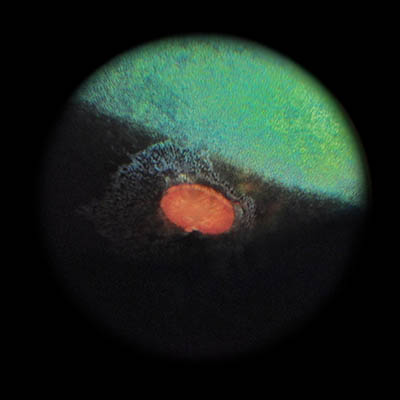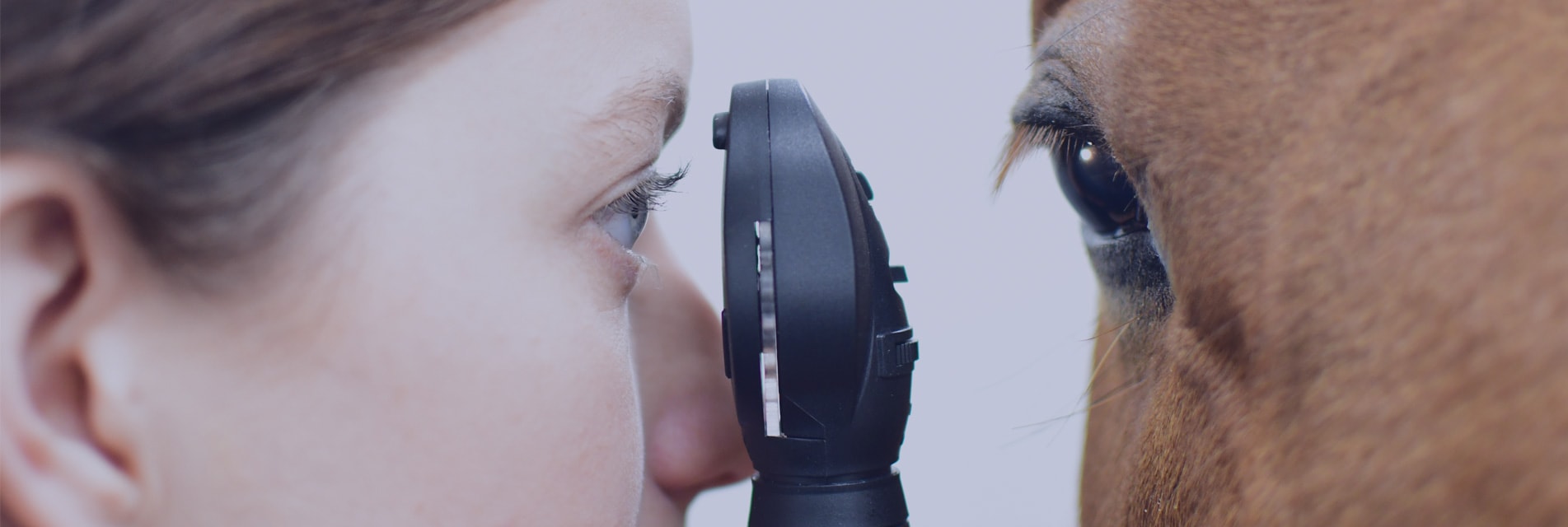Uveitis is an inflammation of the internal structures of the eye and is an extremely painful condition that creates a spasm or cramp of the internal muscles pulling the horse’s pupil into a slit.
 'butterfly' lesion surrounding the optic nerve head of the retinaThere are many causes of uveitis and some horses, such as Appaloosas and Warmbloods, are prone to repetitive bouts of inflammation called Equine Recurrent Uveitis (ERU).
'butterfly' lesion surrounding the optic nerve head of the retinaThere are many causes of uveitis and some horses, such as Appaloosas and Warmbloods, are prone to repetitive bouts of inflammation called Equine Recurrent Uveitis (ERU).
This condition has been studied for hundreds of years and used to be called moon-blindness because it was thought that each bout was caused by the movement of the moon.
Picture
Over the years many studies in different countries have tried to find the cause of ERU and we now know that the disease is related to a stimulation of the horse’s immune system. However ERU doesn’t have a single cause and many factors may contribute to its inception.
Studies have demonstrated links to genetic makeup, bacterial and viral infection, trauma and UV light.
Close examination of the back the equine eye can reveal inflammatory lesions associated with ERU. When the retina is destroyed, loss of vision will occur.
Suprachoroidal implants for equine recurrent uveitis (ERU)
Equine Recurrent Uveitis appears to be becoming more prevalent in the UK with the introduction of more Warmbloods. The recurring inflammation can result in cataract formation, extensive iris adhesions, chorio-retinopathy and glaucoma.
 The condition can be refractory to traditional medical management but with the advent of suprachoroidal cyclosporin implants it is now possible to successfully manage the inflammation for a period of years.
The condition can be refractory to traditional medical management but with the advent of suprachoroidal cyclosporin implants it is now possible to successfully manage the inflammation for a period of years.
The implant is a small disc impregnated with a drug called cyclosporine that’s slowly released into the eye.
The cyclosporine implant is inserted under general anaesthesia and can be combined with cataract extraction in a uveitis case where the lens has been significantly affected.
It’s been demonstrated that a single implant can last longer than three years and will delay the progression of the disease.
The implant doesn’t affect the horse’s vision and we haven’t seen any evidence of discomfort following placement of the implants at our centres.


ERU